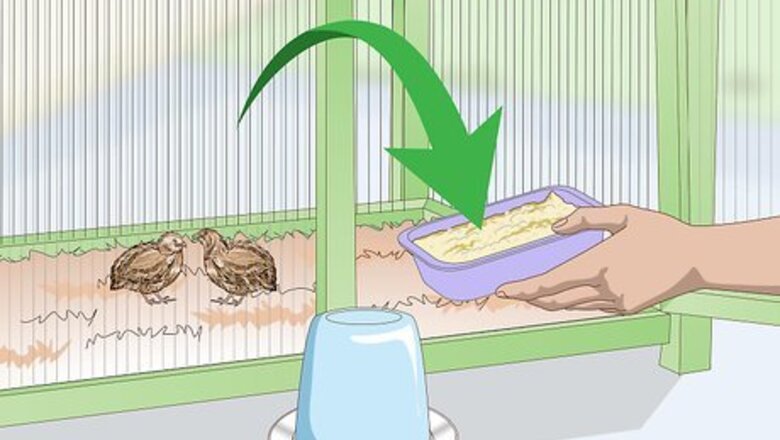
views
Preparing to Clean the Cage
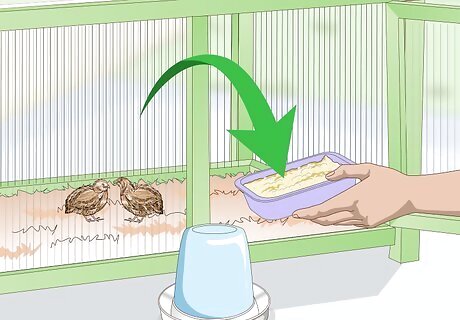
Remove all items from the cage. Start by taking out all the cage accessories, such as food and water dishes and plastic tunnels or huts. You may also have sticks or twigs in the cage that need to be removed. Place these items on a table or in a clean box. You will be washing them later on.
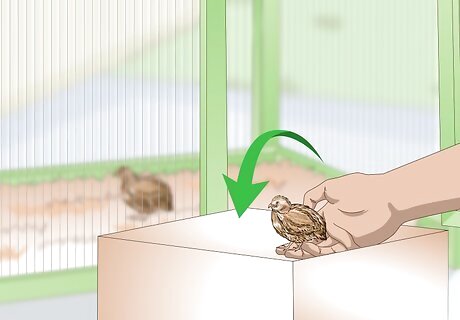
Place the quail in a temporary cage or box. Gently cup the quail in your hands and transfer them to a tall temporary cage or box. Make sure the cage or box is clean and large enough for all of the quail. Quails are small and do not take up a lot of space. Get a box that will leave enough room for the quail to move around while you clean their cage. A standard 17 x 22 inch (43 x 56 cm) box can fit 20 to 30 quail.
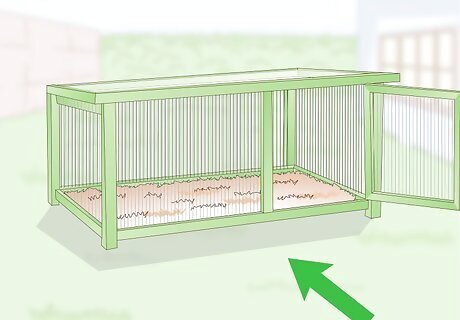
Put the cage outside on a flat, low surface. It is easier to clean the cage if it is outside on a low, flat surface like your deck or by your back door. You can also put the cage on the grass in your yard. Make sure you choose a spot that gives you enough room to move around the cage and clean it.
Cleaning the Cage
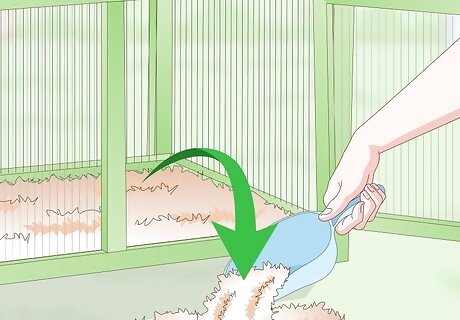
Scoop out the bedding in the cage. The cage should have soft bedding at the bottom, such as pine shavings, grass hay, or straw. You will need to scoop this out with a small shovel and replace it. Remove as much of the bedding as you can with the shovel and place it in a garbage bag. You can then use a small brush or a vacuum to remove any small pieces or dust remaining at the bottom of the cage. Try to get all the dust and debris out of the bottom of the cage.
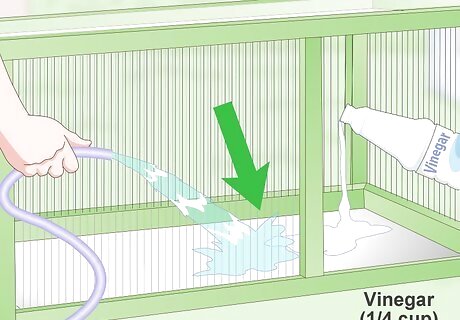
Wash the cage with water and white vinegar. White distilled vinegar will help to sanitize and clean the cage without putting the quail at risk. Do not use soap or bleach, as these can be toxic if inhaled by the quail. Pour ¼ cup white vinegar into the bottom of the cage. Then, use a hose to spray the bottom and sides of the cage, dispersing the vinegar. You can also use a clean towel to wipe the bottom and sides with the vinegar and water mixture. Another option is to combine one part white vinegar with two parts water in a bucket. Then, dip a clean towel in the bucket and wipe the cage down.
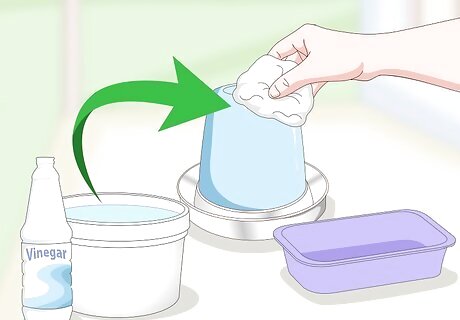
Wipe down the accessories. Use the vinegar and water mixture to wipe down the cage accessories, including the food and water bowl and any plastic cage items. Wipe the accessories down with a clean towel. Make sure you remove all dirt and debris on the items. Take extra care to clean the quail’s food and water bowls. Keeping these items clean will ensure the quail does not come in contact with bacteria or germs.
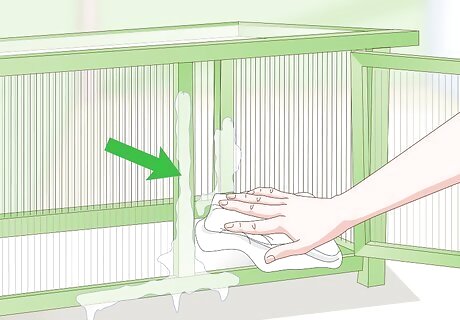
Dry the cage with a clean towel. Once you have washed and rinsed the cage well, use a clean towel to rub the cage dry. Make sure you soak up all the water in the cage with the towel, including in the corners of the cage. Another option is to air dry the cage in the sun. However, this method may take a few hours so towel drying may be the best option.
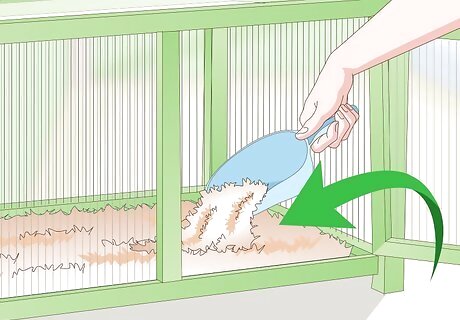
Put fresh bedding in the cage. Replace the bedding so it is fresh and clean for the quails. Spread the bedding in an even layer at the bottom of the cage. You can then put back the cage accessories as well as the food and water bowls. Put the quails back in the cage last so everything is set up and clean for them.
Maintaining the Cage
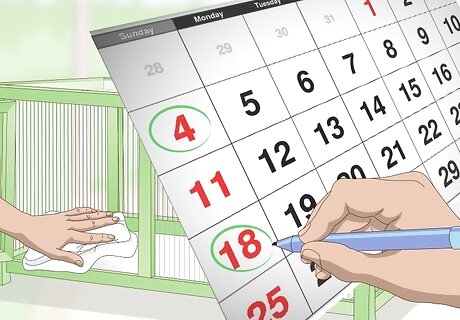
Clean the cage once a week, or twice a month. Get in the habit of doing a good clean of the cage once a week or bi-monthly. Create a cleaning schedule so you clean the cage on the same day every week. Cleaning the cage regularly will ensure the button quail stay healthy and happy. If you are raising the quail for their eggs, a clean cage can encourage the quails to lay.
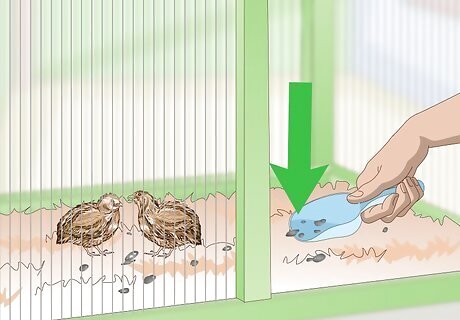
Scoop out droppings in the cage daily. Use a small shovel to remove droppings in the bedding of the cage at least once a day. Leaving droppings in the cage can cause the droppings to harden. The quail can then step on the hardened droppings, leading to health issues like Bumblefoot. Keep a small shovel near the cage for the purpose of scooping up the droppings.
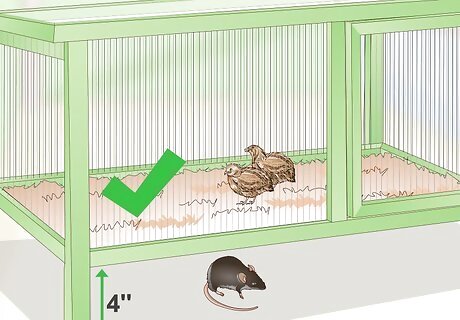
Check that the cage is protected from predators. This is especially important if the cage is kept outdoors in your yard. Use chicken wiring on the sides of the cage to keep predators out. If you have the cage indoors, make sure the cage has metal sides that will not allow predators in the cage. Keep the cage in a safe spot, such as in a room with a door, so pets cannot access it. For outdoor runs, make sure the floor of the run is secure and that predators cannot burrow under the sides.
















Comments
0 comment